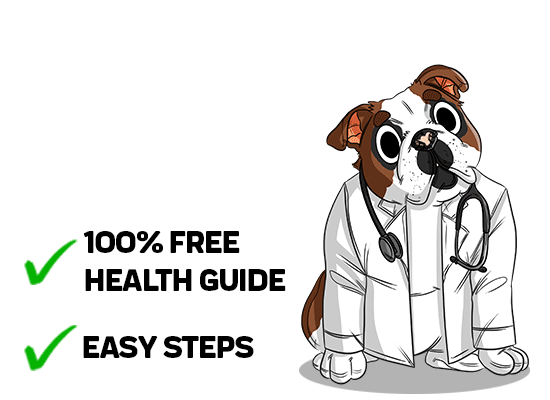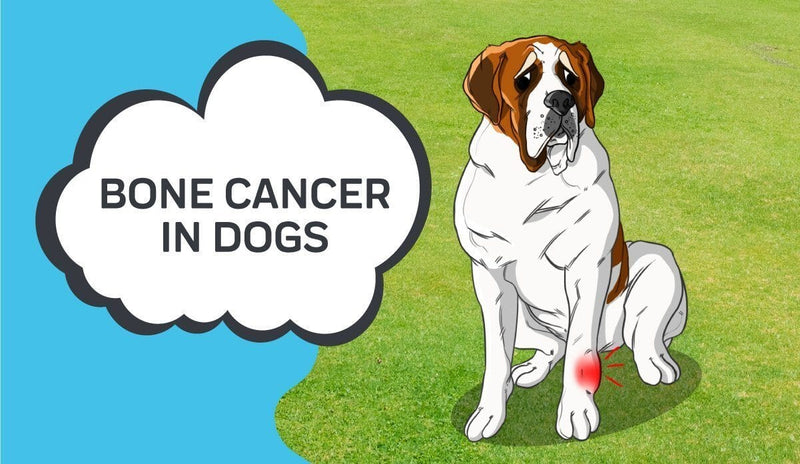- The Most Common Type of Bladder Cancer in Dogs
- Symptoms of Bladder Cancer in Dogs
- How Bladder Cancer in Dogs is Diagnosed
- How to Treat Bladder Cancer in Dogs
- How Long Can a Dog Live with Bladder Cancer?
The Most Common Type of Bladder Cancer in Dogs

A diagnosis of bladder cancer in dogs is not a one-size-fits-all diagnosis for dogs that are showing signs of cancer cells in their lower urinary tract. This is because there are two different types of disease, including urothelial carcinoma (UC) and transitional cell carcinoma (TCC).
Some people will say that they are too similar to be their own separate diagnoses, but slight differences revolve around the origin of the cancer cells. Whether you consider them to be one type of bladder cancer or two, the most common type of this disease in dogs is transitional cell carcinoma.
Transitional Cell Carcinoma (TCC)
Classified as a deadly form of cancer for dogs, TCC, begins with cancer cells appearing in the urinary bladder of dogs, but over time, they metastasize. This means that the cells start to grow in the within the bladder, but soon after they start developing, they move into other parts of the lower urinary tract of dogs. They generally infect surrounding lymph nodes, and then the cancer travels throughout the body by way of these lymph nodes.
The cancerous cells usually arise from the epithelial cells of the urinary tract. Epithelial cells are not cancerous by nature, but the malignant tumors grow from the cells when they become abnormal and grow uncontrollably.
In cases of transitional cell carcinoma, rather than the epithelial cells being the source of cancer, the cancer grows from the transitional cells that line the bladder wall of dogs with TCC.
Symptoms of Bladder Cancer in Dogs
Many types of canine cancer have a general list of symptoms that could appear at any point, no matter which stage of cancer your dog has. This cancer of the bladder is a little different because each stage has its own set of symptoms. The general theme of the issues that arise is that this cancer fully impacts a dog's urinary system which causes straining to urinate like a normal, healthy dog.
There are three main stages in cancer of the bladder, the last being called crisis mode. Let's take a closer look at the symptoms of bladder cancer for each of these three stages!
Symptoms of the Early Stages

Early on, dogs with bladder cancer tend to avoid using the bathroom because it either hurts to urinate or they cannot urinate more than a small amount of at a time. This results in needing to use the bathroom quite frequently, while only going a little bit during each bathroom break.
It's always essential to casually take a look at your dog's urine every once in a while to make sure everything looks normal and healthy. Blood in the urine is indicative of bladder cancer, so checking your dog's urine might clue you into the possibility that bladder cancer is the culprit behind your dog's odd bathroom behavior.
Not only will your dog's difficulty urinating be evident to you, but your dog will pick up on the fact that something is wrong, too. They'll express discomfort by licking their private parts over and over again, so keep an eye out for constant grooming, also.
Over time, you might start to notice obvious irritation in the form of redness down there as well. Little to no appetite is common during the early stages, as is a decrease in thirst.
Symptoms of the Late Stages
Later on, as the cancer progresses, your dog will start losing a significant amount of weight as a result of their decreased appetite. But not only will your dog have a hard time finding the desire to eat food, but your dog will have a hard time keeping food down when they do eat, too. The added symptom of vomiting ends up exacerbating the weight loss that the cancer is already causing, so try to pay close attention to your dog's eating patterns.
Are they eating at all? If yes, are they keeping it down, or is the food coming back up soon after eating? The hunger levels and vomiting combine to create serious abdominal pain for dogs with bladder cancer in the later stages. Dogs with bladder cancer will start pulling away from the people around them, preferring to be alone and sleeping than playing and hanging out with their favorite humans.
If your dog has canine bladder cancer, it's nearly impossible to get them to play, go on walks, or exercise in any capacity. When your dog isn't asleep, he or she will likely walk around, try to lay down for a moment, but then ultimately get up again, only to repeat the up-down-up-down process until they fall back asleep.
The pacing is a dog's way of trying to relieve their discomfort, but it's to no avail. On top of odd bathroom behaviors, your dog might stop pooping altogether, too. This is primarily because they aren't consuming much food. This means there's nothing to excrete as waste. Blood in the urine is likely going to be a frequent occurrence, too.
Symptoms of Crisis Mode
Crisis mode is rightfully named because it's a very critical time for your dogs. Typically, at this point, dogs struggle to breathe properly. You'll likely hear heavy breathing and shortness of breath. This is one of many symptoms that will cause your dog to either whine or whimper in pain.
If your dog starts having seizures, then your dog is likely going through the crisis mode stage. Fainting is another symptom, which can either follow seizures or happen without correlation. The blood in the urine side effect that we mentioned in the earlier stages intensifies and turns into internal bleeding in the most serious of cases.
How Bladder Cancer in Dogs is Diagnosed

To diagnose this disease in dogs, veterinarians must perform a series of tests to rule out other possibilities like urinary tract infections. With the symptoms that the disease causes, it's relatively easy for specialists to pinpoint the bladder as being in the general vicinity of the problem, but it's not always apparent that the problem is the disease itself.
Since the cancer isn't the only type of canine cancer that disrupts the natural urination of dogs, canine cancer specialists have to rule out all the other possibilities. That's why diagnosing urinary tract cancer in dogs is not a straightforward process. Here are some examples of the types of testing your dog might undergo before officially being diagnosed with bladder cancer.
- A biopsy of the lower abdominal region
- An exam is known as the bladder tumors antigen test
- An ultrasound of the bladder and surrounding areas
- A urinalysis and/or a urine sediment cytology
How to Treat Bladder Cancer in Dogs
There are many different treatment options for canine bladder cancer. Your dog's vet will recommend certain treatment options depending on the state of your dog's disease and the severity of the symptoms. Some dogs will undergo a biopsy, and others might need the malignant tumor to be surgically removed.
It all comes down to the specifics of your dog's situation and what your dog's veterinarian believes is best for treating bladder tumors in your dog. So, what are the treatment options for canine urinary tract cancer? Great question!
Treatment options for dogs with TCC include:
- Chemotherapy
- Laser ablation therapy
- Non-steroidal anti-inflammatory drugs, or NSAIDs
- Partial surgical removal of your dog's bladder
- Radiation therapy
- Surgical removal of the entire bladder
- A urinary catheter placement
How Long Can a Dog Live with Bladder Cancer?
Unfortunately, this cancer is a very complex disease because it can cause a lot of complications for the rest of your pet's body. This has a lot to do with the fact that bladder tumors are malignant. When dogs receive a diagnosis of urinary bladder cancer, the prognosis is not the greatest.
As always, consult with your dog's veterinarian before coming to any conclusions, but generally, dogs with bladder cancer often live up to a year after the disease starts to grow. Your dog's circumstances might be different, and there's a chance that your pet will live much longer, so speak with your dog's veterinarian to learn more about what you can expect when your dog has urinary bladder cancer.
Your top two priorities should be keeping your dog as comfortable as possible and doing everything you can to improve your pet's quality of life. If your dog has urinary tract cancer, the best thing you can do is support them in every way possible. Pay extra close attention to them, and show them as much love as possible. Dogs need a best friend while they are going through such trying times, and that best friend is you!
Sources:
Canine Bladder Cancer
Bladder Cancer in Dogs
Why Is Bladder Cancer More Likely in These Breeds?
Transitional Cell Carcinoma in Dogs and Cats

Thanks for stopping by!
P.S. We Love You!
Sincerely,
The Innovet Team
Please do not ask for emergency or specific medical questions about your pets in the comments. Innovet Pet Products is unable to provide you with specific medical advice or counseling. A detailed physical exam, patient history, and an established veterinarian are required to provide specific medical advice. If you are worried that your pet requires emergency attention or if you have specific medical questions related to your pet’s current or chronic health conditions, please contact or visit your local/preferred veterinarian, an animal-specific poison control hotline, or your local emergency veterinary care center.
Please share your experiences and stories, your opinions and feedback about this blog, or what you've learned that you'd like to share with others.
LEARN MORE
Best Selling













 CBD Oil for Dogs
CBD Oil for Dogs Advanced Mobility Support Chews for Dogs
Advanced Mobility Support Chews for Dogs All Natural Oatmeal & Honey Shampoo + Conditioner for Dogs
All Natural Oatmeal & Honey Shampoo + Conditioner for Dogs CBD Dog Treats
CBD Dog Treats





Very informative article. Thank you.